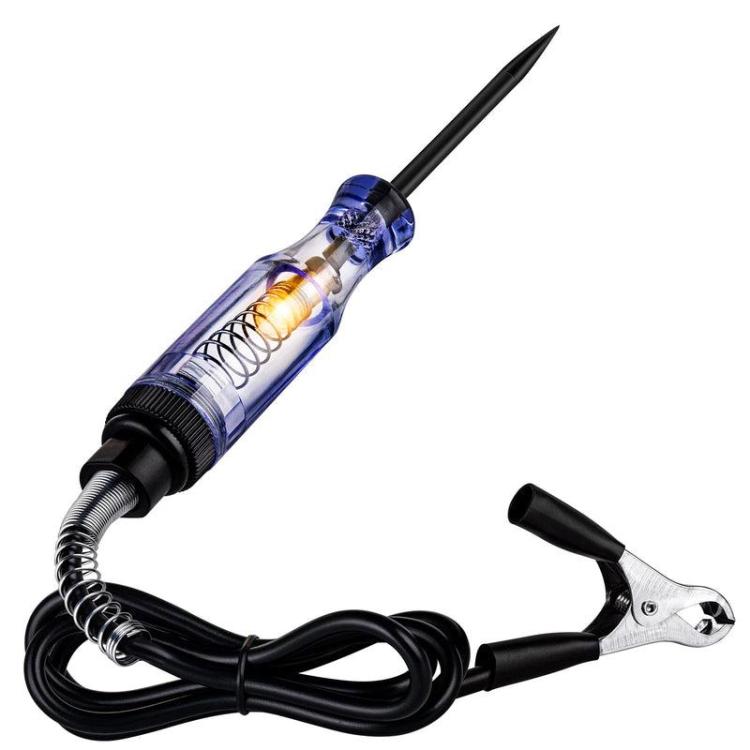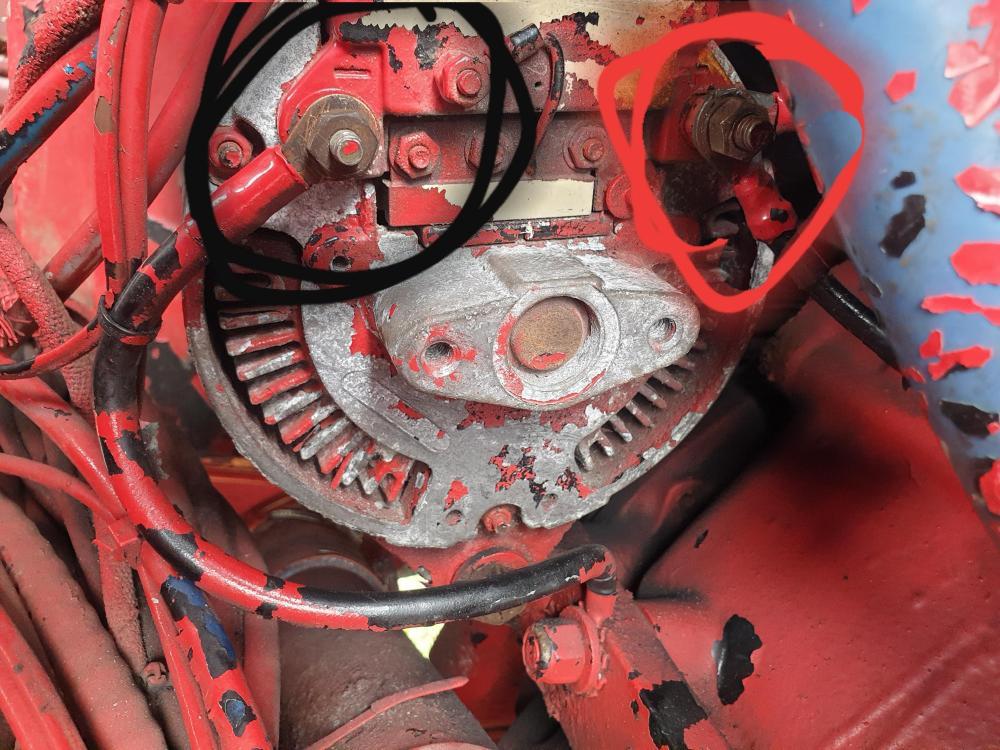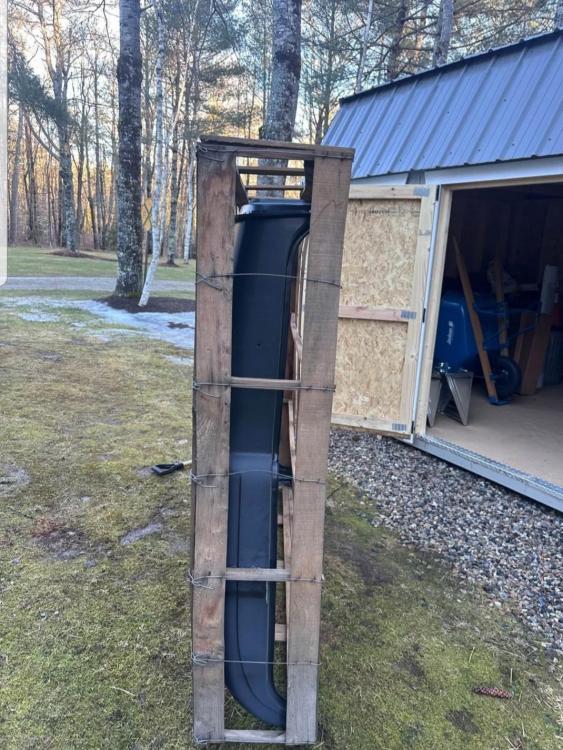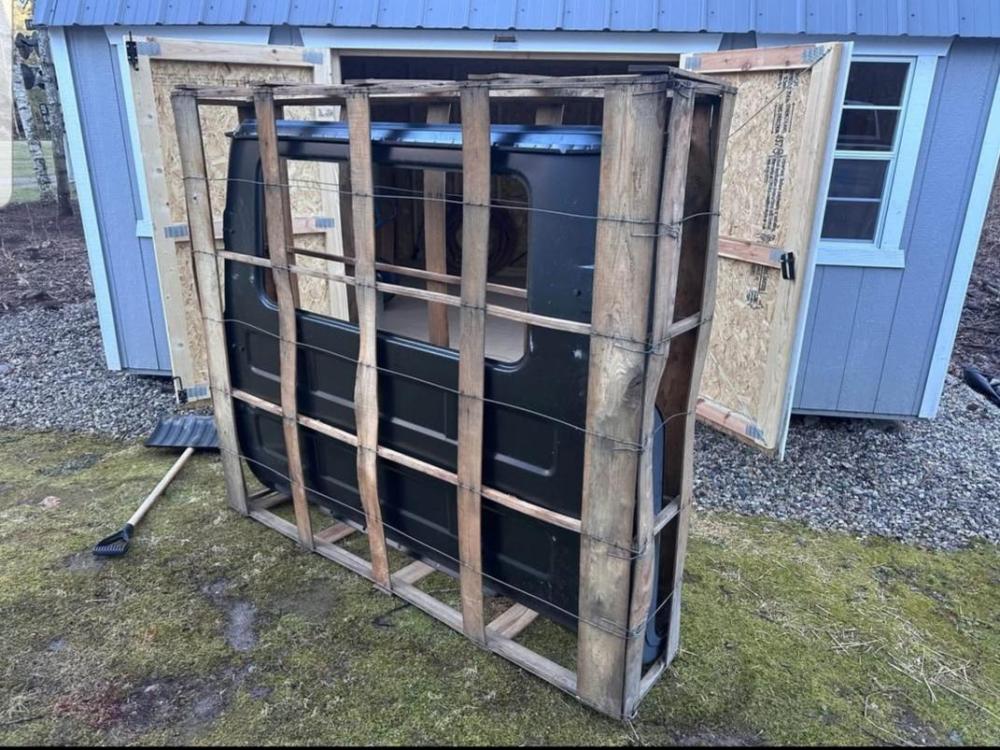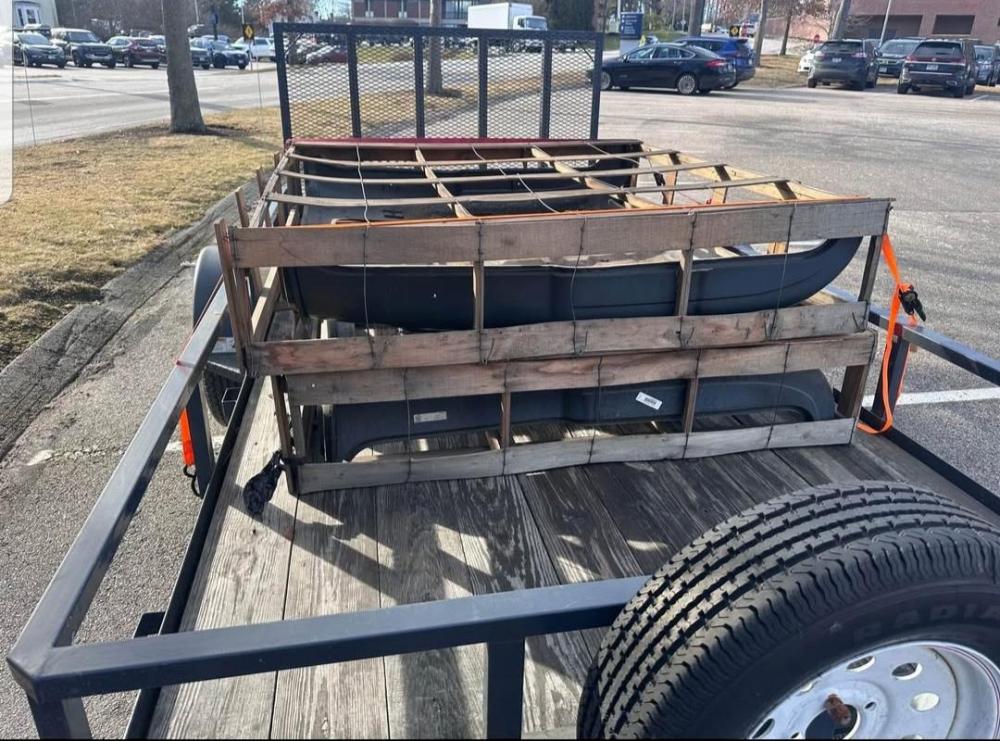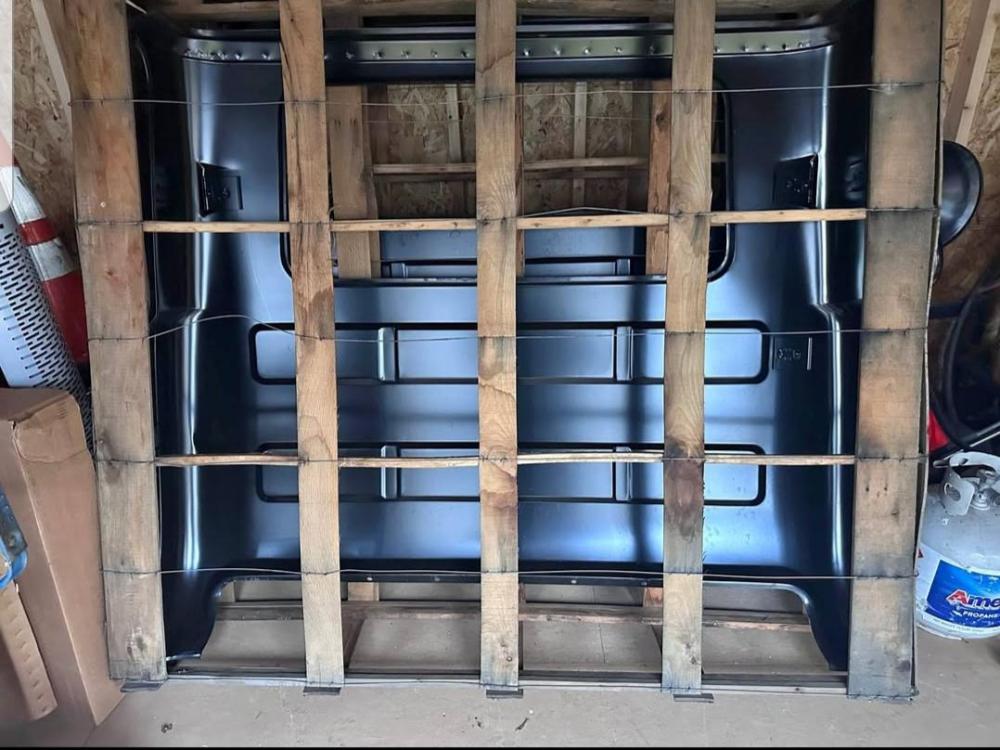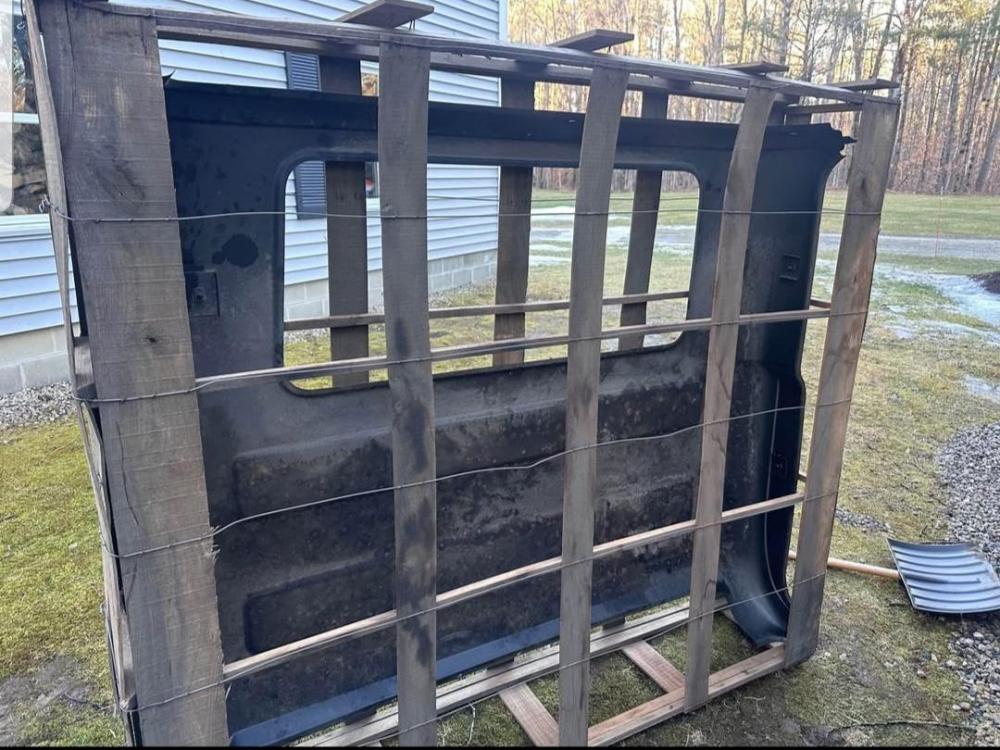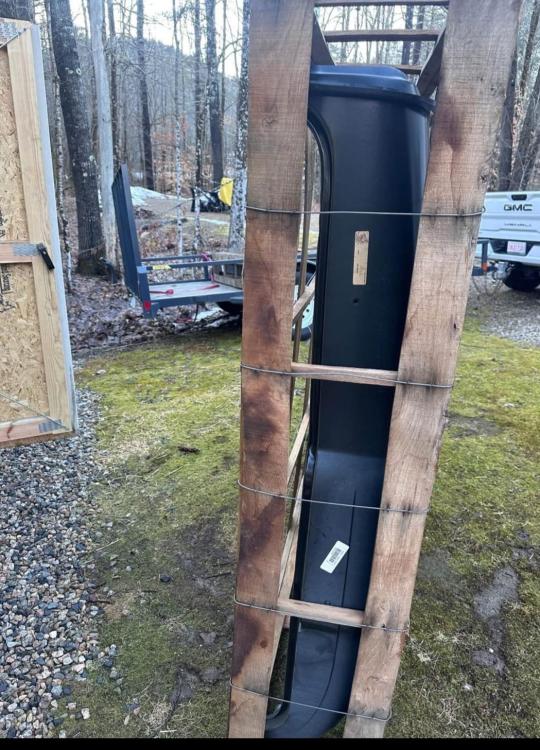-
Posts
6,800 -
Joined
-
Last visited
-
Days Won
85
Content Type
Profiles
Forums
Gallery
Events
Blogs
BMT Wiki
Collections
Store
Everything posted by mrsmackpaul
-

Alternator issues
mrsmackpaul replied to cruiseliner64's topic in Electrical, Electronics and Lighting
Well you'll be fully charged then Bob ha ha ⚡⚡ Paul -
There's reasonably well known a recently built a copy of one and lead everyone to believe it was the genuine item It wasn't until a bit of carryon on social media that he tried to say something about it was only ever a tribute Anyway I guess you can expect anymore from the Kelly gang Same joker ordered a whole heap of new Superliners for heavy haulage, Mack ran stories about the single biggest order of Superliners ever Problem was the useless prick couldn't find the money to pay for them Mack Townsville was trying to sell me one for some time. No good to me but was a very heavy duty truck Paul
-

Alternator issues
mrsmackpaul replied to cruiseliner64's topic in Electrical, Electronics and Lighting
When I first started as a apprentice fixing lifts (elevators for you yanky lot) we never used a multi meter we carried a small lamp holder with two lengths of 1010 (think thats about 20 gauge ?) 2 - 3 feet long, and two light globes A 24 volt and 110 volt globe, our two control circuit voltages We had one anolog multimeter per crew and we fixed high speed high rise lifts with just basic gear 50 story buildings with lifts running at 1500 feet/minute Every bloke was the same, this taught us how to fix and prove what was wrong before changing parts Nearly every round (group of lifts you looked after) was a foot round, so you couldn't just duck down tonthe office to grab a whole heap of maybe parts as you had to catch trams and walk there This method of fixing things I still use everyday no matter if it's a truck or a piece of farm machinery or a electrical issue Anyway, my poor apprentice is told to "stop guessing the answer" I usually add a lot more excitement when I say that and few more not so politically correct words My point is, we tend to over complicate things, even in very modern electronic world the first go to for people is plug the laptop and see what fault codes their are This teachs nothing but how to read fault codes It doesn't teach us how fix things People then look at the code and the book says, this code then change that part That isn't fault finding, that is monkey see monkey do Anyway, rant over, freezing cold and horrible weather today so I have the heater on and it's breaky time Maple syrup bacon and pancakes, no good for the body but tastes fantastic Paul -

Alternator issues
mrsmackpaul replied to cruiseliner64's topic in Electrical, Electronics and Lighting
If you have enough voltage to make the globe glow okay then you'll have plenty of voltage to excite the alternator A test lamp is quick, simple, anyone can read it and interpret the result Light is on or light is off Now I'm sure some people will say "I have seen them at 11.5 or 10.5 volts and it wasn't enough to excite" Well Im gunna first of all suggest that if your saying that then you probably don't have a good understanding of how the alternator works or you just wanna be right and like a argument Neither of which I can help you with Simple basic electrical theory is still the same today as 100 years ago It's either on or its off, there is no in between, there's dirty contacts, crook terminations and so on, these create resistance, but it is still either on or off Geoff I like the idea of the key ring test, I'll try that out one day Important thing is the alternator issue here as I understand it is fixed Paul -

A fare lump of a stick
mrsmackpaul replied to mrsmackpaul's topic in Antique and Classic Mack Trucks General Discussion
A few old Macks and plenty of other cool old gear Paul P -
I guess the answer is no, I certainly haven't tried to Paul
-

Alternator issues
mrsmackpaul replied to cruiseliner64's topic in Electrical, Electronics and Lighting
100% correct, if someone isn't competent with basic electrical knowledge a test lamp is far better than a multimeter Understanding how to read the instrument and interpret the results correctly comes from propper training and thorough understanding of what people are doing So a basic test lamp is adequate at this stage Keep it simple and let's not over complicate things KEEP IN MIND YOU MIGHT HAVE TO SCRATCH AROUND A BIT ON THE STUDS AND CONNECTIONS TO GET A GOOD READING so maybe get some emery cloth and clean the nuts, lugs and studs up spotlessly clean before you begin testing, I doubt this is your issue but it gives you a good spot to start testing and yes big dark letters because this is really important to give propper test results Grab a test lamp, see if you have power at the alternator or not First thing first, alligator clamp on the negative ( - ) battery terminal and the pointy end on the positive battery terminal ( + ) , the lamp should light up, if it doesn't you might have a dud globe in the tester That is your most important test, always test the tester on a known lice supply Then grab your test lamp, alligator clamp on stud I circled in black, with the key turned on put the probe end on the stud circled in red, does the globe in test lamp light up ? If yes skip a few steps here If no, then shift the alligator clamp to a good clean ground or frame or better still to the battery terminal marked - Try again on the stud circled in red, if you have power at the terminal the fault is between the negative ( - ) terminal and the alternator If no power put the alligator clamp on the positive battery terminal ( + ) test between the stud circled in black You should have power here if not Try testing further back were the ground strap from the alternator bolts to the frame Still no good test back to were the battery lead bolts to the frame and so on If yes from above, follow the same principle as the the negative, slowly test back through the circuit, tracing out wires etc until you get the lamp to light up When it lights up you have gone passed the fault I think it will be something simple here to find if you know what your doing and a slow frustrating job if you don't But stay patient and we will help as best as we can But if to much bull shit advice, like I reckon, or old mate says these always do And so on I'll butt out as it becomes messy over the internet Paul -
Winter is well and truly here in Australia brrrrr Pooch isn't looking very impressed with the start to the day Paul
-

Alternator issues
mrsmackpaul replied to cruiseliner64's topic in Electrical, Electronics and Lighting
Regulator is crook So do you have power (12 volts or light globe test lamp) the alternator Paul -
Have a great day 🍻 Paul
-

Voting time
mrsmackpaul replied to Mack_man's topic in Antique and Classic Mack Trucks General Discussion
Been bucked a few times in my life, still might have a few good bucks left in me 😆 Paul -

Finally some DM progress
mrsmackpaul replied to mowerman's topic in Antique and Classic Mack Trucks General Discussion
Yeah mate, any little thing to help get us through the day ha ha Paul -

Voting time
mrsmackpaul replied to Mack_man's topic in Antique and Classic Mack Trucks General Discussion
So "if the Superliner bucks, then Mack man is in luck" ? 😁 Paul -

Finally some DM progress
mrsmackpaul replied to mowerman's topic in Antique and Classic Mack Trucks General Discussion
Well done young fella Thats progress right there, okay I officially give you permission to have a bevy or two 🍻🍺 or perhaps a umbrella type of bevy is more your style 🍹 No matter, you've done well Paul -
Welcome to the forum Mack Australia also had their own aerodyne bunks They are a tough looking truck and go pretty well Apparently parts for the E9 V8 are getting a little thin on the ground Having said that, I do see full out of chassis kits been advertised in Australia still I think dropping valves was the most common issue in Australia They were tough old trucks with a great exhaust note and pulled like a 16 year old Paul
-
What do you meam shakes ? A little more information please
-

Finally some DM progress
mrsmackpaul replied to mowerman's topic in Antique and Classic Mack Trucks General Discussion
Well it sounds like today is the day for it Good luck with it Bob Paul -
Not mine, not my country, nothing to do with me at all but thought it might help some other joker out Clickty click on the link bellow https://www.facebook.com/share/128XDRUTxnD/ Paul
-
How much is it for 16 drums ? Paul
-

Voting time
mrsmackpaul replied to Mack_man's topic in Antique and Classic Mack Trucks General Discussion
3 -

Mack B873sx restoration
mrsmackpaul replied to hicrop10's topic in Antique and Classic Mack Trucks General Discussion
Well never feer, I dunno stuff all about stuff all Yes some people get quite passionate about been right I try not to, I do remember many years ago on the forum a fella had a R model that kept ...... Or on tge ACMOC forum a fella with a old D8 that smoked really bad developed no boost anf it turned out .... It doesn't really matter about been right for me It's all about having fun and helping each other I try not to take things to heart And someone actually has to listen to what we are saying as well All part of the fun Timken back ends had grease in the hubs and oil in the guts Paul -

Superliner RW700 Steering axle
mrsmackpaul replied to 1961H67's topic in Antique and Classic Mack Trucks General Discussion
Yeah but that's the exception Brocky, most of our roads are very flat and straight What we call a mountain range is just a bump by world standards Paul
BigMackTrucks.com
BigMackTrucks.com is a support forum for antique, classic and modern Mack Trucks! The forum is owned and maintained by Watt's Truck Center, Inc. an independent, full service Mack dealer. The forums are not affiliated with Mack Trucks, Inc.
Our Vendors and Advertisers
Thank you for your support!







